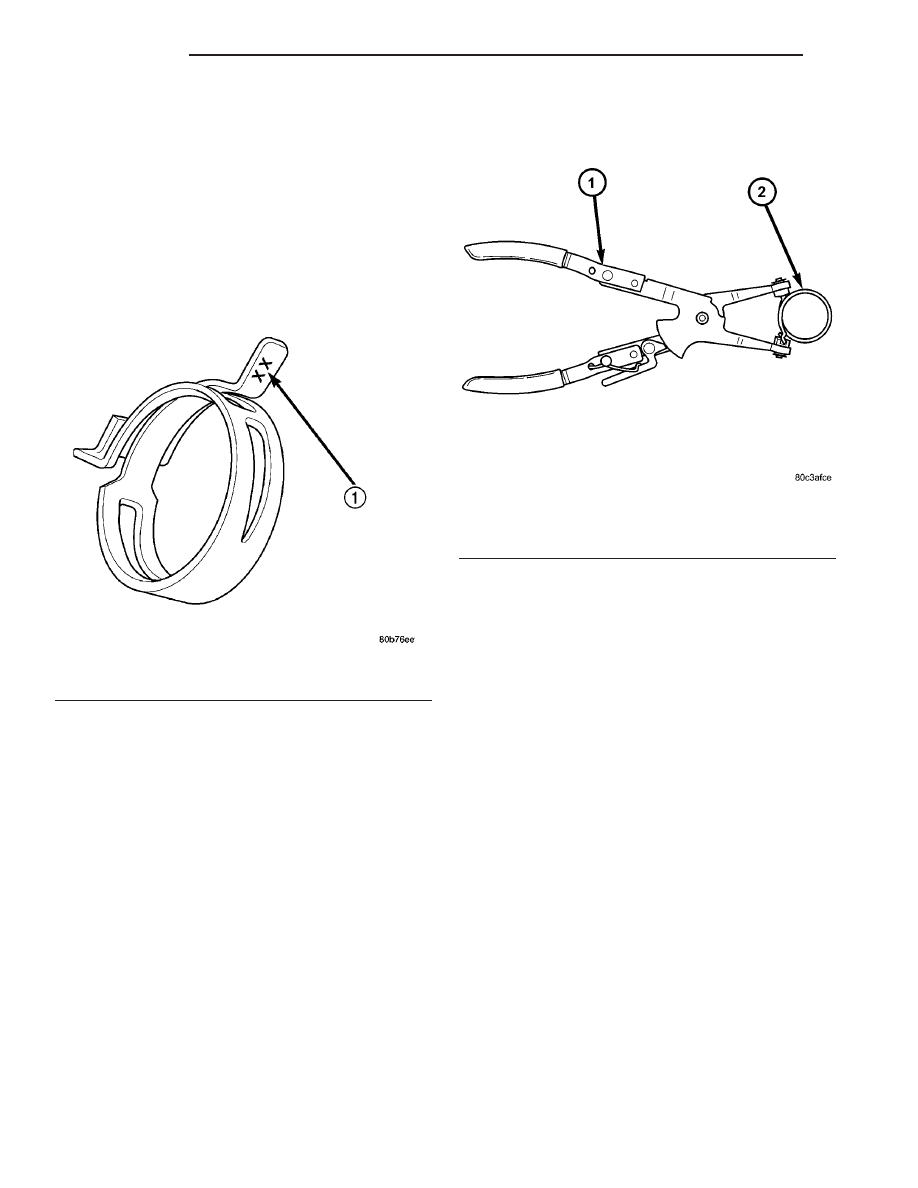Dodge Viper SRT-10 (ZB). Manual - part 53

HOSE CLAMPS
DESCRIPTION
The cooling system uses constant tension spring
type hose clamps. If a spring type clamp replacement
is necessary, replace with the original Mopar
t equip-
ment spring type clamp.
CAUTION: A number or letter is stamped into the
tongue of constant tension clamps. If replacement
is necessary, use only a original equipment clamp
with matching number or letter (Fig. 17).
The constant tension type hose clamps maintain
constant clamping force on the hose connections as
the temperature of the cooling system rises and falls.
Worm gear type hose clamps may not have sufficient
clamping
force
in
colder
weather
conditions
if
installed during warm weather.
To remove a spring type hose clamp, use Special
Tool 8495 Hose Clamp Pliers, or equivalent, (Fig. 18)
to compress the hose clamp.
COOLING SYSTEM HOSES
DESCRIPTION
If cooling system hose replacement is necessary,
replace with the original Mopar
t equipment hoses
(Fig. 19).
RADIATOR FAN
DESCRIPTION
The hydraulic cooling fan is integral to the fan
shroud and is located between the radiator and the
engine. The power steering pump supplies hydraulic
fluid and pressure to rotate the cooling fan blade,
while the electrical part of the fan is controlled by
the PCM.
The hydraulic fan drive (motor) consists of the
three major following components:
• Steering flow control valve
• Fan control valve
• Two stage G-rotor hydraulic drive
The hydraulic fan and drive is not serviceable sep-
arately. Therefore any failure of the fan blade,
hydraulic fan drive or fan shroud requires replace-
ment of the fan module because the fan blade and
hydraulic fan drive are matched and balanced as a
system and servicing either separately would disrupt
this balance.
Fig. 17 Spring Clamp Size Location
1 - SPRING CLAMP SIZE LOCATION
Fig. 18 Hose Clamp Pliers
1 - SPECIAL TOOL 8495 HOSE CLAMP PLIERS
2 - HOSE CLAMP
7 - 20
ENGINE
ZB